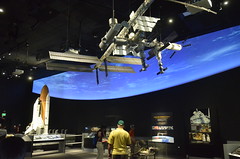The most crucial facet of creating a man-made grass lawn may be the preparation. You will find no cutting corners. This short article outlines the steps you need to follow to evaluate the viability of the ground and prepare it for installation. Including taking accurate dimensions, assessing ground conditions and getting rid of the present lawn grass layer.
1. Calculating
Mark from the area to become measured. It can benefit to mark from the area having a spray fresh paint or sand. When calculating it is important to incorporate an overlap of 100mm over each edge for coverage within the timber perimeter. Artificial Grass is available in 2 metre and 4 metre wide comes and may be provided in measures to match you. You should measure precisely to calculate the particular measurements needed.
2. Survey/Ground Conditions
Assess if the ground terrain is susceptible to poor drainage. In such instances, to make sure a acceptable base, measures must automatically get to install sufficient and appropriate drainage.
If your new sub-surface has been built to consider artificial grass, a small fall ought to be incorporated to help drainage (1:200 is good). Porous (open textured) Macadam is especially appropriate like a sub base for all kinds of Artificial Grass.
Paving foundations aren’t acceptable like a base because after some time the pattern from the foundations can have on the top of grass. The foundations ought to be removed or engrossed in a thick layer of coarse sand.
Well compressed unbound aggregate (stone) bases are perfect and when a man-made lawn may be constructed from scratch, this kind of base could be suggested. Any unbound surface, which drains and it is stable and reasonably level, however is perfectly acceptable. When the surface is simply too rough it might be screeded with coarse sharp sand, just before lounging the grass to make a smooth flat layer.
Although artificial grass might be laid directly onto a current lawn, provided the drainage is acceptable, this isn’t always very acceptable in the long run. Natural grass will die out and also the roots will decay, leading to unevenness within the surface. Elimination of the grass and compaction from the resulting soil base will overcome this issue, specifically soil is included having a layer of compressed grit sand.
3. Elimination of Lawn Grass
Take away the grass sod and all sorts of other plant life and materials manually or employ a turf cutter in order to save effort and time. Grade the soil to approximate levels getting rid of any large sticking out gemstones and firmly compact. You need to install drainage if required after which compact the floor utilizing a vibrating plate that may be hired from a tool provider.
When the above basic steps happen to be completed, you you will need to install your artificial lawn.
